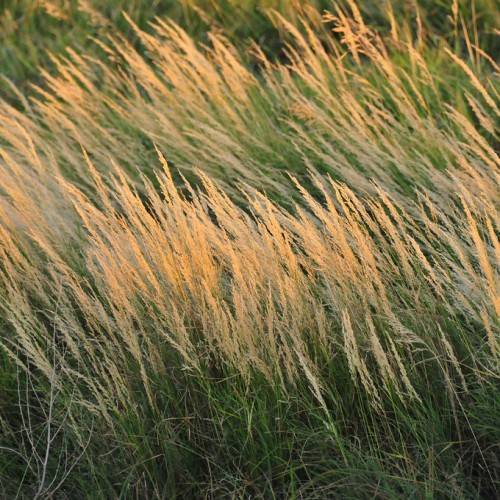
Blue Joint Reedgrass
Calamagrostis canadensis var. macouniana
Also Known As - BluejointWatering:
Frequent
Hardiness Zone:
Sun:
full sun,part shade
Leaf:
Yes
Growth Rate:
Low
Drought Tolerant:
Yes
Salt Tolerant:
Yes
watering
Reedgrass should be watered when the top inch of soil feels dry to the touch and the plant shows signs of wilting. When watering, apply enough so that it gives the soil a good soaking but allow the soil to slightly dry out between watering. A weekly deep soaking should be plenty to keep it growing happily. Avoid over-watering and do not let the soil become soggy, as this can lead to disease and rot. During the winter months, reduce watering to once a month or less, allowing the soil to dry out.
sunlight
Reedgrass (var. canadensis x Calamagrostis canadensis var. pickeringii) prefers to grow in full sun, meaning it will benefit from at least 6 hours of direct sunlight each day. This plant species is able to tolerate some shade, but it grows best in full sunlight and is therefore more likely to flourish and produce its full potential of blooms and foliage. Reedgrass starts growing actively in early spring, when temperatures begin to rise above 40 degrees Fahrenheit. Growth activity will remain steady throughout the summer months, and gradually decrease in the autumn season, until temperatures drop too low for the plant to be active.
pruning
Reedgrass (var. canadensis x Calamagrostis canadensis var. pickeringii) should be pruned to keep it within the desired size and shape over time. Pruning should take place in late winter after the plant has lost most of its foliage, roughly from late February to late March. This also gives the plant a chance to regenerate and fill in with new growth for the upcoming growing season. The pruning should include removing dead or damaged branches as well as cutting away any excessive grow at the base or sides of the shrub to shape and reduce size. This enables the plant to branch out and produce a full and attractive shape. As this variety of reedgrass tends to grow vigorously, some regular pruning may be necessary throughout the growing season to keep the plants in the desired shape.
